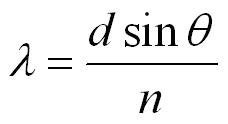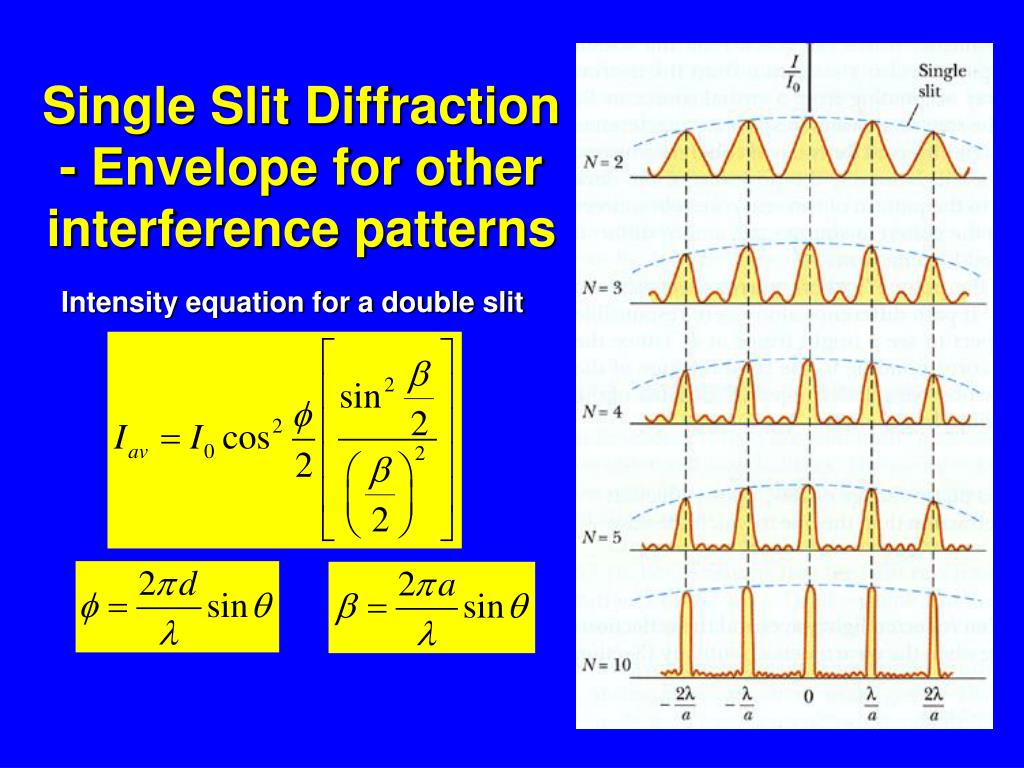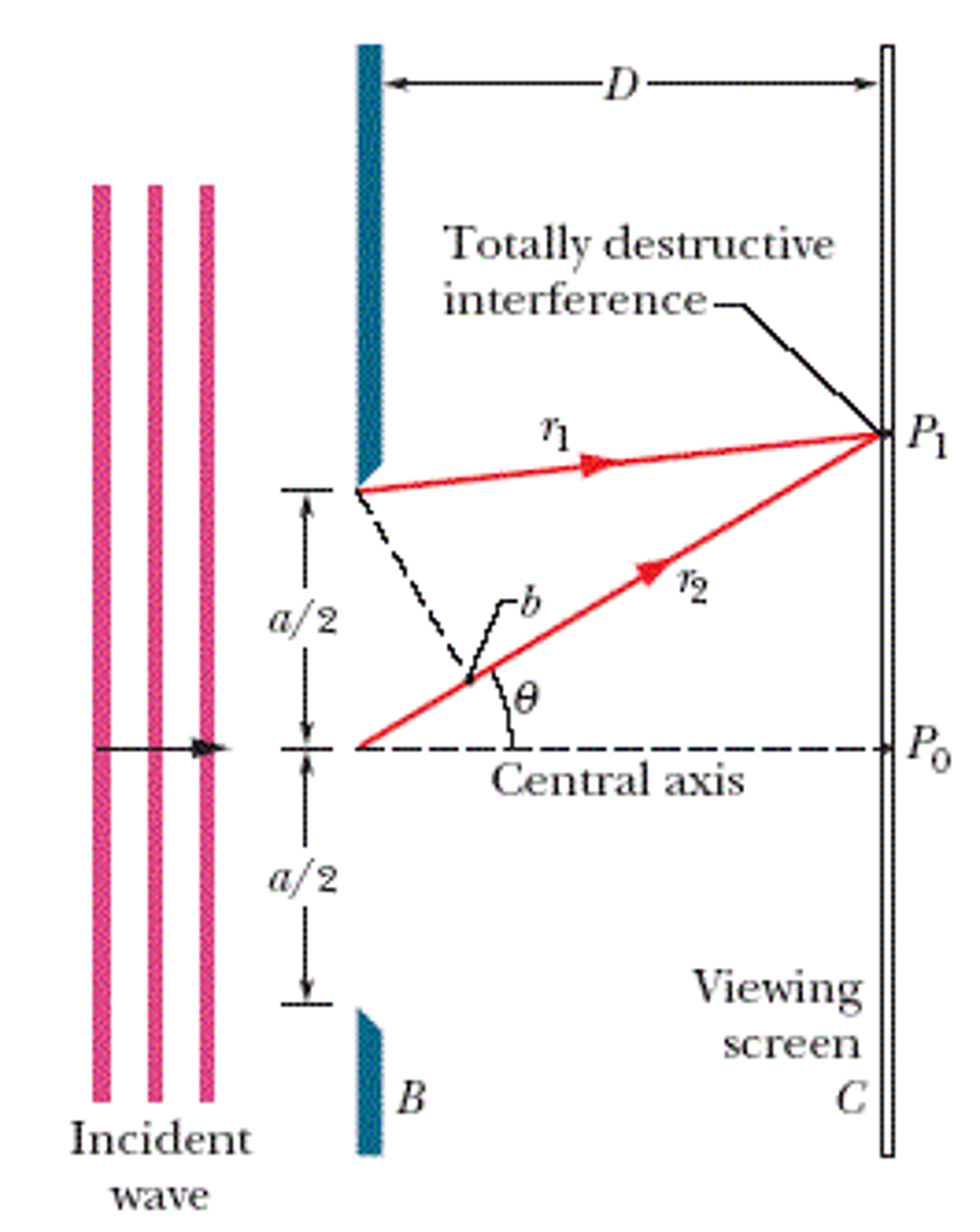

Unlike the double slit experiment, the d (the distance between two sources of wavefronts) can be varied. Ok so, initially the equation is dsin(t) = m L/2 (t being theta, L being lambda).

not an easy concept to grasp, so please keep asking f its not making sense yet. We say that the individual slits have imposed a single slit 'envelope' onto the double slit pattern So the individual slits 'superimpose' their individual effects ONTO the double slit pattern. But look, it is gradually fading towards the edges.that is the effect of the single slit pattern. See the green picture above.The combination of the two coherent sources produces the regular max/ min pattern of a double slit diffraction pattern. the COMBINED effect of A and BĪnd the independent effects due to A and the effect due to B. The new sound C is due to the interaction of A and B.īut then we find that A has its own independent effect on CĪnd B also has its own independent effect on C and combined, they produced a new sound C.

Imagine if we have two identical sound sources A and B. Hereīut you can see here that each of the slits has its own 'influence' on the pattern of maxima and minima. The double slit pattern is not a combination of two singles slit patterns.īut you can see BOTH patterns at the same time.įor the double slit pattern, The waves from each slit 'combine' to form the regular maxima and minima of the double slit pattern. w(lambda), see the next video, titled "More on single slit interference". These diffraction patterns occur under the assumption that the slit is small relative to the wavelength of the light - i.e. Consider how we do not observe diffraction patterns when there are larger holes in, say, window curtains. This will occur when the difference between the lengths of the beams of light are (lambda)/2.įor other cases, the diffraction pattern will be less noticeable, or non-existent. In other words, in cases where the beams of light at the top and midpoint are destructive, then we will see this diffraction pattern. Let me see if I can find a diagram to help.īut its a great question shows good thinkingĥ:27, David says that IF the top and middle beams of light interfere destructively, then all of the other beams of light will interfere destructively (as every beam of light will have a "partner" that destructively interferes and thus cancels it out). The size of the individual slits determines the shape of the 'envelope' that controls the size of each of the maxima. The interaciton of the light from the two slits produces the regular max-min pattern Now, how quickly they get smaller depends upon the size of the individual single slits that make up the double slit.Īs the slits of the double slit arrangement get narrower, what happens to the double slit pattern? You will see that if the slits are very narrow, then the hills (maxima) in the double slit pattern get smaller but much slower. They get smaller as you move away from the centre line. Well, if you look again at the double slit patter, the hills are not all he same size. So, where is the single slit pattern in the doubles slit pattern? lots of equally sized hills (max) and valleys.

looks like a big hill in the middle with smaller hills on each side ok? Its a little difficult to explain face to face even, so on here, may be a bit tough, but, here goes.


 0 kommentar(er)
0 kommentar(er)
